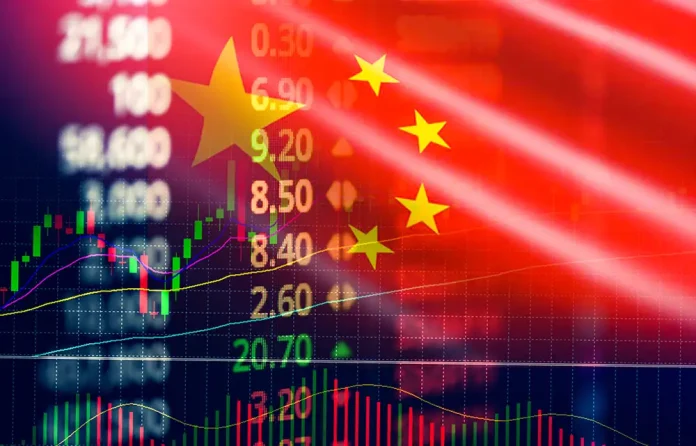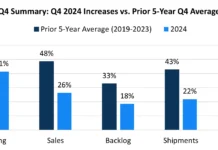by Chris Kuehl, managing director, Armada Corporate Intelligence
The data that has come pouring from China of late points to a real economic crisis, the worst the nation has experienced in decades. The slump in the second quarter took the economy to a contraction of 2.6% from the first quarter and the annual growth rate was a pathetic 0.4%. This affects the entire global economy as China drives one-fifth of total worldwide GDP. The impact on the economy of China has been severe – over 265 million people are in lockdown and that affects almost 20% of the nation’s economy. There has been a massive surge in youth unemployment – estimates run as high as 30% without jobs. The housing market has utterly collapsed and has taken hundreds of businesses and banks down with it. Local governments have incurred massive debts and have no way of paying them back. It is by any account an economic meltdown, and it is one that has been self-imposed. China is the only major nation that has continued to pursue the draconian tactics of lockdown and “zero-tolerance” to contend with the pandemic. The burning question is, “Why?”
By now, the factors that led to China’s crisis are well known and the role of politics has been very apparent. The outbreak of the virus in Wuhan was denied and covered up for months in 2019 as local officials did their best to hide the issue from Beijing. When the virus spread beyond their control, the Beijing leadership joined in the campaign to obfuscate and deny and the local crisis became a national one and then spread to the entire world. The time to isolate and quarantine was in October of 2019 – not three years later. The challenge has been made worse by the decision to focus on a vaccine that was inferior. The Chinese version never was more than 40% effective against COVID-19, and with the omicron variants, the effectiveness has fallen to less than 20%. The emphasis on vaccines and treatment was placed on party members, the military and “essential workers” rather than on the elderly and vulnerable, and the death toll was therefore high. Throughout this crisis, the emphasis has been on tactics of isolation and control despite the abundant evidence of that strategic failure.
The variant that is sweeping China (and the world) is highly transmissible, but it also seems to be less dangerous to those that are healthy. There have not been as many hospitalizations and deaths anywhere in the world and that actually is part of the problem. This version of COVID-19 is not called the “stealth virus” for nothing. Most have no symptoms (or very mild ones) and essentially are unaware they even have the disease unless they are tested almost daily. That simply is not remotely possible in a nation of 1.4 billion people. The majority of the world has come to accept the virus now is a constant and that policies will have to adapt to some combination of tolerance and control. Emphasis is placed on the most vulnerable and urging caution while resisting the urge to shut down the daily lives of the population.
The assessment of the Chinese policy leads analysts to conclude these tactics are driven by political control. The leadership refuses to admit mistakes that led the country to this point and now seems driven by its single-minded commitment to total control. It is as if the autocrats think they can issue orders to a virus. This can’t be done, and China is in the process of destroying its economy in the pursuit of the impossible.
So – now that more information has been provided on what is happening in China than asked for, what difference does all this make? Why should the US manufacturer, wholesaler, distributor or consumer really care? There are obvious and not-so-obvious reasons this has become an issue for the US and the world in general. To start with China, is the world’s second-largest economy because it sells a great deal of materials to the world’s first-largest economy – the US. The relationship would be seen as symbiotic were it not for the fact the two nations are increasingly hostile to one another. The Chinese are the largest trade partners for the US – even after all the tensions and tariffs and restrictions. The US imports close to $700 billion from China every year and exports some $140 billion. Obviously, there is a trade imbalance here. The vast majority of that import surge consists of consumer goods, but there are billions in parts and assemblies and a significant amount of all this involves the plastics industry. Quite clearly, the trade between the two nations ranks as one of the primary global drivers. When that trade is disrupted, the impact is widespread – and that has been seen for quite some time.
If one were to query the business community as well as the consumer sector to find their number one concern right this minute, the answer would be inflation. What else would it be with a Consumer Price Index (CPI) that has reached a 40-year high? The burning question is where this inflation has come from. The usual culprits have not been the real cause – it is not excess demand or too much money in the system. It has not even been a surge in wage costs (although that has started to play a role). The inflation now seen is energy-related and supply chain-related. The energy surge is easy to identify – it is what happens when the second-largest oil producer in the world is frozen out of the system. The supply chain driver is more complex and is rooted in China.
There are only two ways to react to a shortage of something. If there is more demand for a given product than can be met by suppliers, they can do one of two things. Option one is to make the whole process “first come, first served.” Prices stay where they are and the system simply runs out of whatever it is. No matter how badly users want or need something, it is not available. Option two is to hike prices to dampen demand. Those who really want or need the product can get it if they are willing to pay the price. Back in the days of the USSR, it was the former tactic that dominated. There was no inflation but no products either. This was made worse by the fact that suppliers couldn’t raise prices to offset the higher costs they faced for inputs. It was utter stagnation. Inflated prices are brutal, especially for those who can’t adjust, but at least there is an option to get what is needed or wanted.
The collapse of the supply chain in China is forcing the shortage option. It is not a matter of inflated pricing from China (although that is happening as well). There simply is no availability as the materials and products are not making it out of the Chinese ports and, in many cases, they are not being produced at all. The massive congestion at Chinese ports means that tens of thousands of containers full of products are not moving – and may not for months. Earlier this year, retailers in the US were getting Christmas orders in March and spring merchandise in July. Builders lacked basic material; manufacturers lacked parts. The list is long.
The unfortunate reality is that inflation numbers will worsen regardless of what the Fed does with interest rates because the root of the problem is a war in Ukraine and a Chinese supply chain that has been compromised by a policy toward the pandemic that is failing.
Chris Kuehl is managing director of Armada Corporate Intelligence. Armada executives function as trusted strategic advisers to business executives, merging fundamental roots in corporate intelligence gathering, economic forecasting and strategy development. Armada focuses on the market forces bearing down on organizations.
More information: www.armada-intel.com





